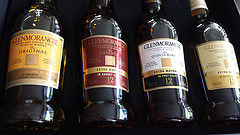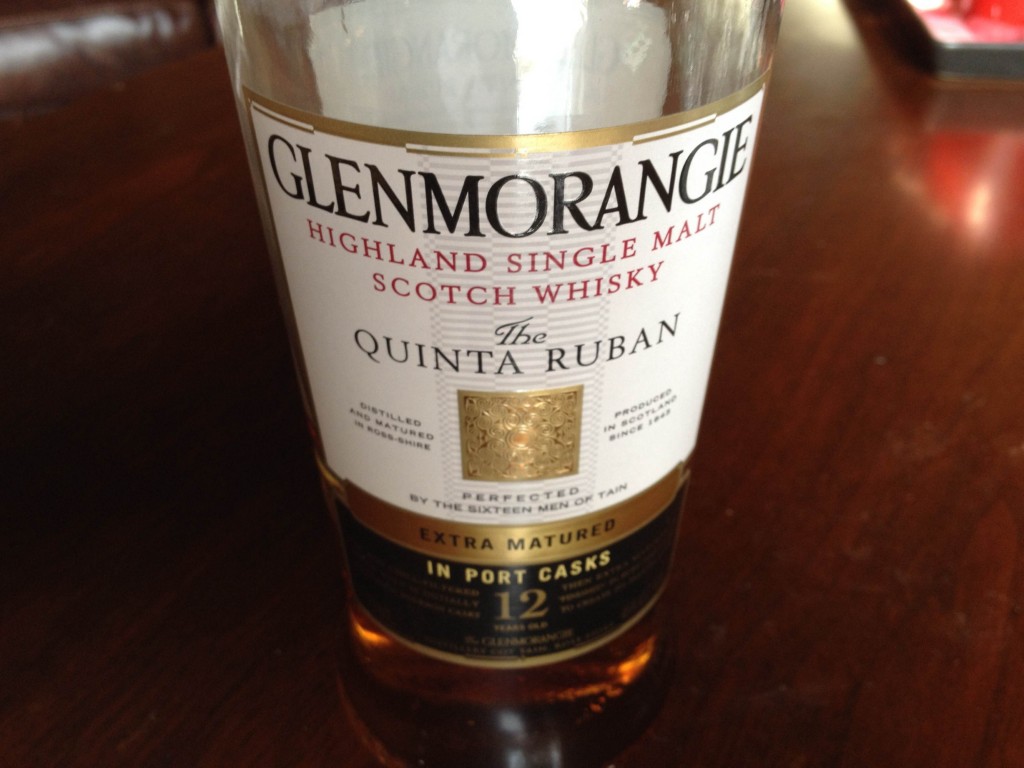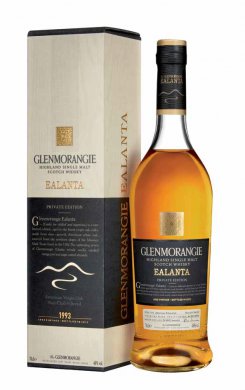
Credit: Fareham Wine
Take, for example, Glenmorangie Quinta Ruban, which is is Glenmorangie’s port finish. I love it. It’ll set you back around $60 here in Maryland, one of the most affordable port finishes you’ll find. I’ve done searches online for affordable port finishes and the ones that come up are Tomintoul 12yo Port and Arran Port Finish 50%, neither of which are available here. Everything else is far more expensive (Check out the price of Balvenie’s Port Wood! — granted it’s aged far longer and I personally believe it’s worth every penny… but still!).
But for today, we’re talking Glenmorangie – The Nectar D’Or. Aged 12 years, it’s their Sauternes finish. Sauternes is a sweet French wine from the Sauternais region (of the Graves section) of Bordeaux. Sauternes itself is a fun dessert wine because it’s made from Sémillon, Sauvignon blanc, and Muscadelle grapes. Now get this… the Muscadelle grapes have to have been affected by Botrytis cinerea, or noble rot, because it causes the grapes to be partially raisined! Sauternais has the perfect environment for this noble rot. I found that fascinating.
I recommend, given the opportunity, that you try the finishing product (in this case Sauternes) whenever possible. I am a big fan of port so I was able to figure out its impact on the Quinta Ruban. I’ve never had Sauternes so I can’t as easily pick out its impact on Nectar D’Or but some things are hard to miss.
Tasting Notes
- Nose: Citrus, light raisins and fresh grapes, and a light sweetness with a richness of hazelnuts.
- Palate: Honeyed from the get go, citrus, with toasted almonds and hazelnuts. There’s a bit of the cereal and barley flavor in there but it’s very much a dessert finish.
- Finish: Finish is medium and where the cereal stands out after the sweetness subsides, you also get some vanilla and the lingering of the hazelnuts/toasted almonds
Doing some brief research, there aren’t a tremendous amount of Sauternes finishes out there. A quick search on Royal Mile Whiskies revealed only seven, many of which showed low stock and probably aren’t available here in the States. If you’re sold on Sauternes or just want to give it a try, this is your best bet if your here on this side of the Atlantic.
As for this dram, I enjoyed it. It’s fun tasting a wine through a whisky because you can tell that this marriage was probably a big challenge. Port has has big bold flavors, it’s fortified with brandy, so that marriage is of equals. Sauternes is like more delicate and so the flavors it imparts are lighter, citrusier (is that a word?), and so you won’t get the big influence you see in Quinta Ruban.
I’d give it a go if I was expanding my selection, certainly a good dram, but I prefer the port finish (and even the sherry finish in Lasanta).

 I’m a sucker for a good finish and lately I’ve been poking around all the port finishes of my favorite whiskies. My last tasting note was for the
I’m a sucker for a good finish and lately I’ve been poking around all the port finishes of my favorite whiskies. My last tasting note was for the 